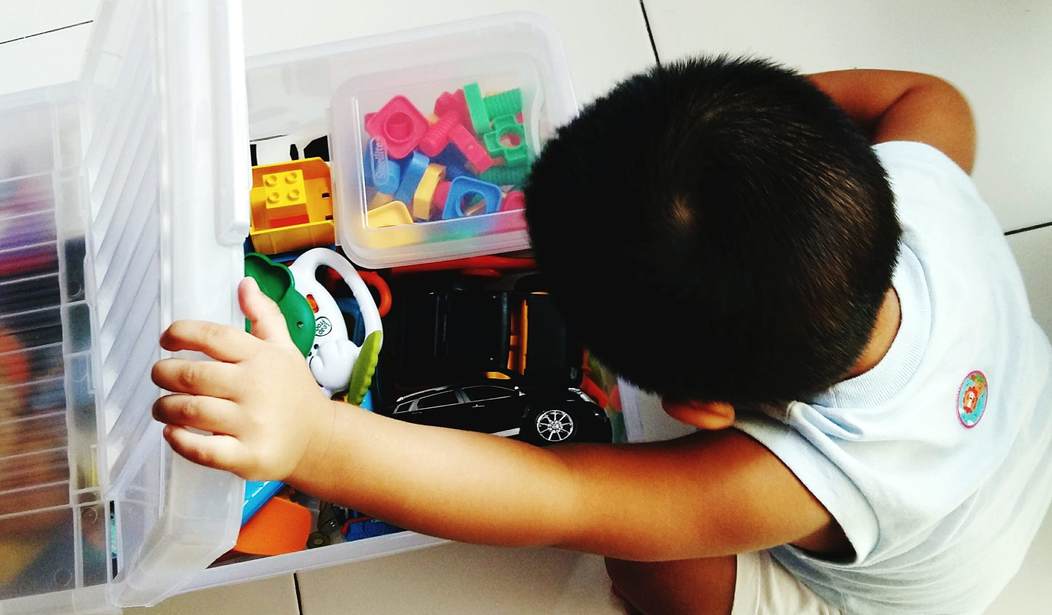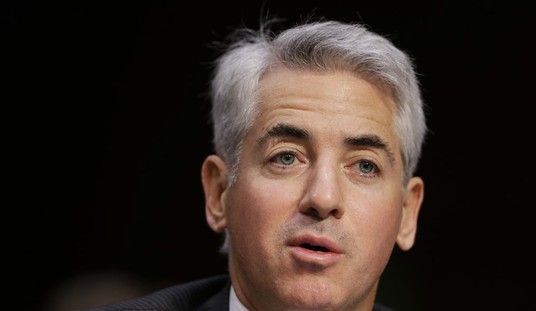If your toddler is old enough to understand basic commands, he’s ready to start helping to clean up his toys. Yes. I’m serious. True, this might not actually help you at first (and might actually make the whole process more arduous for a while). But if you start now, by the time he’s two he’ll be cleaning up his toys almost all by himself. Trust me, it’s possible.
But the phenomenon of the two-year-old housekeeper doesn’t come about by itself. Tidiness is not on the typical toddler’s list of priorities. He must be taught. Here are some tips for drawing out your toddler’s inner neat freak.
1. Organize your toys
Before you begin teaching your child what to do, it’s important that there’s a little bit of order to the chaos. If you haven’t done so already, group your child’s toys into some (very) loose categories. They should be simple enough that your toddler can understand them, but specific enough that the toys don’t just get thrown into an enormous jumble in the toy bin, never to be seen again. So, “animals,” “cars,” and “musical instruments” are good categories (if you have lots of each of those things). But, “toys that light up,” or “stringed instruments” are not. If you’re feeling extra organized, you can label the bins or drawers with a picture of the kind of item that belongs in each of them. But your child will pick it up without that and, really, who has time for stuff like that?
2. Draw your child’s attention to the cleanup process
If you haven’t been expecting your child to take part in the cleanup process thus far, he probably has no idea whatsoever that it’s actually happening. So, step one is to get him interested in the whole idea by talking about what you’re doing while you’re doing it. Say, “It’s clean up time!” and begin putting away the toys. If you’re so inclined, it can be helpful to sing a cleanup song to make it clear that a new activity is happening and to make it more fun. I happen to hate (with a passion) the ubiquitous “clean up, clean up everybody everywhere” song, so I made up my own. But, to each his own. Anyway, point out the bins and what goes in them, and then begin putting the toys away. If he seems particularly interested, you can say something like, “Can you put this truck in the bin for trucks?” but the goal, initially, is just to let him know that this is something that happens, and that the toys have specifics spots.
3. Give your child specific directions
Once you’ve been cleaning up with your child for a week or so, it’s time for him to get involved. Start small. It’s the rare toddler who’s ready to go from totally oblivious to sorting all his toys into their separate bins. Begin by picking up one toy and handing it to your child. Have him come with you over to the appropriate bin and say something like, “This is a truck. It goes in the truck bin, can you put your truck in here?” Then, when he does it, give him lots and lots of praise. See if he’ll do it again. If he loses interest or gets frustrated, stop for now and clean up on your own, continuing to talk about what you’re doing. Once he sees that this is something that’s becoming part of your lives, you can give him a little more freedom (but not much). Tell him something like, “I see a car over there, where do you think that goes?” and then watch to make sure he puts it in the right place.
4. Give him larger tasks
Once you child has the basic idea, it’s time to give him more responsibility. Put him in charge of putting away all the toys in a certain category. You could say, “Please put away all the animals. Here’s the bin they go in. Can you find them?” This may go very smoothly, or it might be a total disaster. But keep at it. If your child gets distracted, refocus him. Keep an eye on him and give him praise each time he puts something away. You could say, “Great job! I see more animals. Can you find them?” If finding all the appropriate type of toy is a little too daunting, collect them yourself and put them in a pile near the correct bin. Then your child can simply transfer them. Do it like this for a while and then try again to ask him to find them around the house. While he’s getting the hang of this, you’re still in charge of all the other categories. He just needs to complete one.
5. Put him in charge
Once your toddler has become a pro at putting away one toy category he’s ready to take over. Well, sort of. You’ll still have to be the manager, but he’ll do the heavy lifting. Direct him to put away one toy category at a time. Praise him when he completes one, and then tell him which category is next. Of course, if he’s just completed an epic play session and every single toy is out, you’re going to have to help a little. Or, if he’s feeling particularly averse to cleaning up on any given day, you can offer to help in exchange for his agreement to pick up one type of toy. The last thing you want is for this to become a power struggle, so if it seems like your child is getting frustrated, back up a couple steps. You know your child, you’ll know how much he’ll be able to do in any given moment.
***
The idea that your toddler can clean up on his own may sound ridiculous. But it’s not. With a little work on your part (and on his) he can take responsibility for his own things (and feel proud of it too!). Let’s be clear, though. This isn’t going to happen overnight. Or even in a week, or a month. Work with your child to master each step before moving on to the next. Be patient. Some toddlers will catch on right away, others will need more time. But stick with it. Your life will be easier in the long run, and you’ll have taught your child an important skill. Happy cleaning!









Join the conversation as a VIP Member